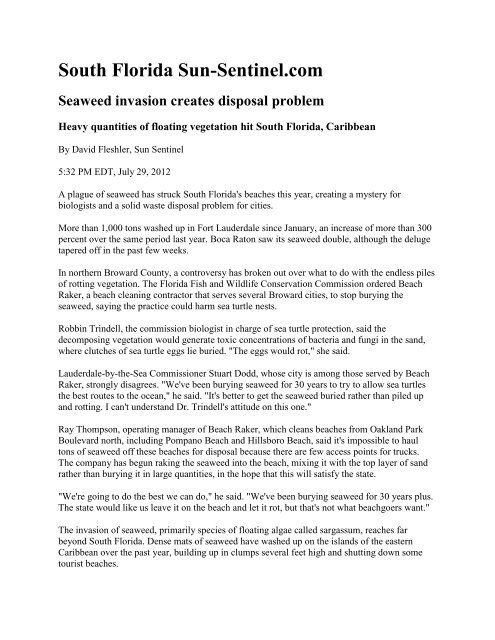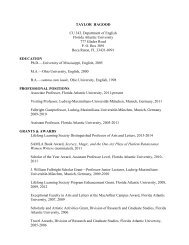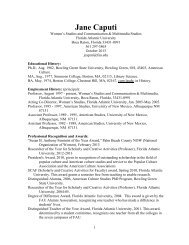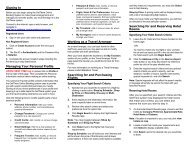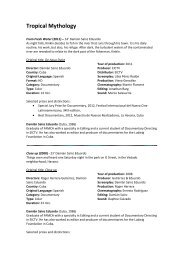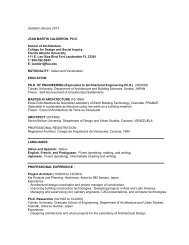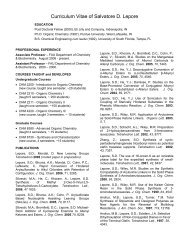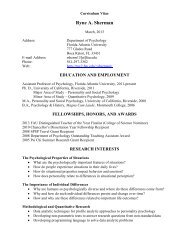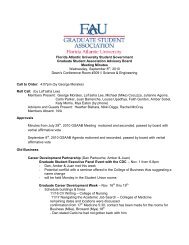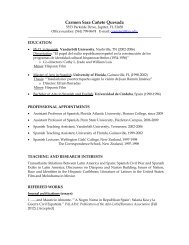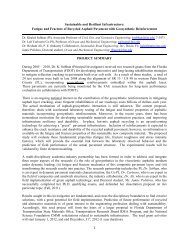South Florida Sun-Sentinel.com Seaweed invasion creates disposal ...
South Florida Sun-Sentinel.com Seaweed invasion creates disposal ...
South Florida Sun-Sentinel.com Seaweed invasion creates disposal ...
Create successful ePaper yourself
Turn your PDF publications into a flip-book with our unique Google optimized e-Paper software.
<strong>South</strong> <strong>Florida</strong> <strong>Sun</strong>-<strong>Sentinel</strong>.<strong>com</strong><br />
<strong>Seaweed</strong> <strong>invasion</strong> <strong>creates</strong> <strong>disposal</strong> problem<br />
Heavy quantities of floating vegetation hit <strong>South</strong> <strong>Florida</strong>, Caribbean<br />
By David Fleshler, <strong>Sun</strong> <strong>Sentinel</strong><br />
5:32 PM EDT, July 29, 2012<br />
A plague of seaweed has struck <strong>South</strong> <strong>Florida</strong>'s beaches this year, creating a mystery for<br />
biologists and a solid waste <strong>disposal</strong> problem for cities.<br />
More than 1,000 tons washed up in Fort Lauderdale since January, an increase of more than 300<br />
percent over the same period last year. Boca Raton saw its seaweed double, although the deluge<br />
tapered off in the past few weeks.<br />
In northern Broward County, a controversy has broken out over what to do with the endless piles<br />
of rotting vegetation. The <strong>Florida</strong> Fish and Wildlife Conservation Commission ordered Beach<br />
Raker, a beach cleaning contractor that serves several Broward cities, to stop burying the<br />
seaweed, saying the practice could harm sea turtle nests.<br />
Robbin Trindell, the <strong>com</strong>mission biologist in charge of sea turtle protection, said the<br />
de<strong>com</strong>posing vegetation would generate toxic concentrations of bacteria and fungi in the sand,<br />
where clutches of sea turtle eggs lie buried. "The eggs would rot," she said.<br />
Lauderdale-by-the-Sea Commissioner Stuart Dodd, whose city is among those served by Beach<br />
Raker, strongly disagrees. "We've been burying seaweed for 30 years to try to allow sea turtles<br />
the best routes to the ocean," he said. "It's better to get the seaweed buried rather than piled up<br />
and rotting. I can't understand Dr. Trindell's attitude on this one."<br />
Ray Thompson, operating manager of Beach Raker, which cleans beaches from Oakland Park<br />
Boulevard north, including Pompano Beach and Hillsboro Beach, said it's impossible to haul<br />
tons of seaweed off these beaches for <strong>disposal</strong> because there are few access points for trucks.<br />
The <strong>com</strong>pany has begun raking the seaweed into the beach, mixing it with the top layer of sand<br />
rather than burying it in large quantities, in the hope that this will satisfy the state.<br />
"We're going to do the best we can do," he said. "We've been burying seaweed for 30 years plus.<br />
The state would like us leave it on the beach and let it rot, but that's not what beachgoers want."<br />
The <strong>invasion</strong> of seaweed, primarily species of floating algae called sargassum, reaches far<br />
beyond <strong>South</strong> <strong>Florida</strong>. Dense mats of seaweed have washed up on the islands of the eastern<br />
Caribbean over the past year, building up in clumps several feet high and shutting down some<br />
tourist beaches.
"It's a regional phenomenon," said Brian Lapointe, research professor at <strong>Florida</strong> Atlantic<br />
University's Harbor Branch Oceanographic Institute. "There have been reports of unusually large<br />
amounts of sargassum in Bermuda, in <strong>Florida</strong>, in the Caribbean, the west coast of Africa. Huge<br />
amounts <strong>com</strong>ing ashore, clogging beaches and shorelines. It <strong>creates</strong> a solid waste problem. It sits<br />
there and rots and has to be removed."<br />
Asked how unusual this was, Lapointe said, "Based on observations by 'old timers' in the eastern<br />
Caribbean last year, this phenomenon [excessive biomass of Sargassum on beaches, bays, and<br />
coastlines] appears to be unprecedented in recent history."<br />
No one knows the reason for the seaweed increase, but there are several theories. Stephen<br />
Leatherman, director of the Laboratory for Coastal Research at <strong>Florida</strong> International University,<br />
who is also known as Dr. Beach, said strong winds off the ocean this season may be driving<br />
more seaweed onshore.<br />
Lapointe said there's a strong possibility an increase in plant nutrients, particularly nitrogen and<br />
phosphorus, washed off farms and lawns into rivers and canals, fertilizing the growth of<br />
seaweed. The BP oil spill in the Gulf of Mexico may have contributed, as bacteria broke down<br />
the petroleum, freeing elements such as nitrogen that could further support seaweed growth, he<br />
said.<br />
"We're seeing a regional increase in nutrients that's causing an increase in productivity,"<br />
Lapointe said. "There could also be subtle and significant shifts in ocean currents. We're<br />
carefully watching it right now."<br />
What can be done with all this seaweed? The most effective solution may have been developed<br />
by Fort Lauderdale, which hauls it by truck to a <strong>com</strong>post pit at Snyder Park, allowing it to<br />
de<strong>com</strong>pose for three months and using the resulting soil for landscaping projects.<br />
"It's good, rich, black dirt," said Mark Almy, the city's beach manager.<br />
Has the city found uses for the 1,008 tons that have washed up so far?<br />
"We definitely have a surplus right now," he said.<br />
Delray Beach uses some seaweed to reconstruct dunes, rakes some into the beach and hands over<br />
any surplus to Waste Management for <strong>disposal</strong>. Boca Raton holds a permit from the <strong>Florida</strong><br />
Department of Environmental Protection to bury it, but does this shoreward of the sea turtle<br />
nests, between the dunes and the lifeguard stands, said assistant city manager Mike Woika.<br />
From the perspective of shorebirds, juvenile fish, crustaceans and many biologists, the preferred<br />
course would be to leave the seaweed on the beach. These piles of rotting vegetation provide<br />
homes for marine creatures, food for a large range of species and foraging grounds for migrating<br />
birds.
"If you live on the beach, what is there to eat?" asked Trindell, of the state wildlife service. "This<br />
material forms the basis for the food chain. Juvenile fish, birds — they're dependent on that<br />
material being present and accessible. I recognize that on a recreational urban beach that's not<br />
likely."<br />
dfleshler@tribune.<strong>com</strong>, 954-356-4535<br />
What is seaweed?<br />
First, seaweed it's not really a weed, since it doesn't crowd out other plants.<br />
<strong>Seaweed</strong> includes thousands of species of floating algae and plants, from microscopic plankton<br />
to giant kelp forests.<br />
The most <strong>com</strong>mon kinds washing up on <strong>South</strong> <strong>Florida</strong>'s beaches are various species of<br />
sargassum, brown and greenish seaweeds equipped with air bladders to allow them to float. They<br />
provide homes for juvenile sea turtles, fish, crabs, birds and other marine creatures.<br />
Sources: National Marine Fisheries Service, <strong>Florida</strong> Department of Environmental Protection


